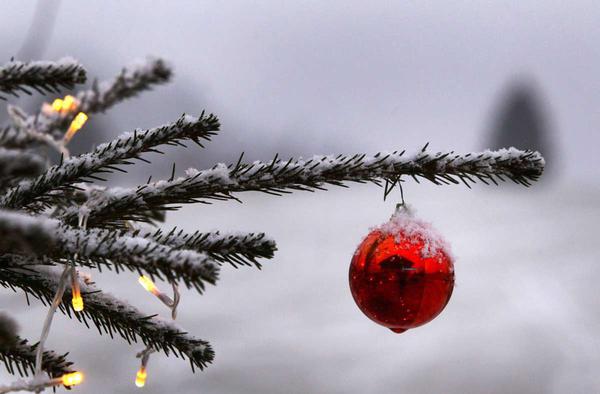
Offenbach - Climate change reduces the prospect of a white Christmas in many regions of Germany. According to the German Weather Service (DWD), a comparison of the reference periods 1961 to 1990 and 1991 to 2020 shows that the chances of this - with snow cover on all three days (December 24th to 26th) - increased on average in Germany by 13 percentage points and regionally even decreased by up to 44 percentage points. This means a percentage decrease of 52 percent for three days of snow at Christmas.
According to the information, the south of Germany is particularly affected, where just a few decades ago there was snow almost every other year at Christmas. "That's not surprising. Climate change with rising temperatures is gradually driving the romantic White Christmas out of Germany,” commented DWD spokesman Uwe Kirsche on the data.
Calculated decrease in probability for seven cities
The DWD has currently calculated the decrease in the probability of a White Christmas for seven cities in Germany: In Berlin, the statistical chance has decreased by exactly ten percentage points, as has Hamburg. But while in Leipzig the probability fell by only 3.8 percentage points, in Munich it was 19.5, in Freiburg 12.2 and in Frankfurt/Main 11.8 percentage points.

That means: Statistically, most people in Germany can only look forward to snow on the three public holidays every ten years. "Although the trend is clear, the variability of the climate gives hope for an exception every year," said Kirsche. However, the meteorologists of the DWD could estimate at the earliest ten days before Christmas whether snow will fall and stay put.
Similar findings in the neighboring Alpine countries
It is similar in the neighboring Alpine countries: Studies by the DWD, the Federal Office for Meteorology and Climatology MeteoSwiss and the Austrian Central Institute for Meteorology and Geodynamics (ZAMG) show that the winters in Germany, Austria and Switzerland have become warmer in the long term at all altitudes. It is very likely that this trend will continue in the future.
Due to global warming, there is significantly less snow at lower altitudes. After all: At higher altitudes above about 1500 to 2000 meters, according to the information, sufficient natural snow for winter sports and mostly White Christmas can be expected in the coming decades.
Recently in many countries the mildest winters in the history of measurements
Nevertheless, the mildest winters in the history of measurements have been recorded in many European countries in recent years. Six of the ten warmest winters of the 21st century were recorded in Germany. In Switzerland, the winter of 2019/20 was the warmest nationwide since the official measuring network was introduced in 1864. In Austria, the number of days with snow cover, for example in Vienna, Innsbruck and Graz, has increased by around 30 in the past 90 years percent decreased.
"Climate change in the Alps does not stop at political borders," emphasized Mischa Croci-Maspoli, head of the
Climate department at the Federal Office for Meteorology and Climatology MeteoSwiss. Tobias Fuchs, DWD board member for climate and environment, expected the intensive cooperation of the weather services of Germany, Austria and Switzerland to develop sustainable and holistic strategies to improve the resilience and adaptability of the regions.







